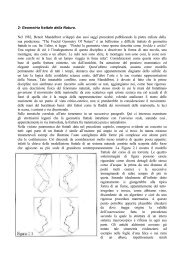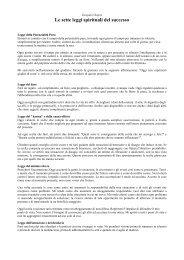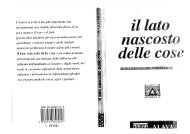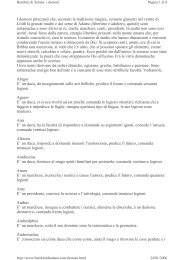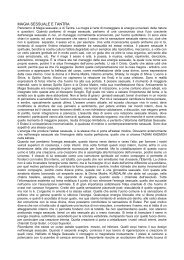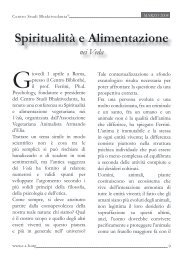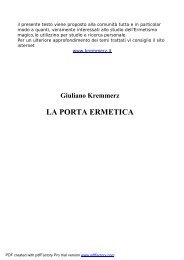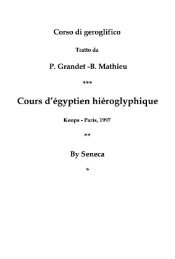144 ~ TALIBANing, as Niyazov put it to me as early as December 1991, 'the new Kuwait'. 1Since independence Turkmenistan, like other oil rich CARs, haswaited in vain for its oil and gas riches to reach outside markets. Landlockedand surrounded by potentially jealous and hostile powers - Russia,Iran, Afghanistan and Uzbekistan - the Central Asian states have manoeuveredrelentlessly for pipelines to be built that would end their isolation,free them from economic dependence on Russia and earn hard currencyto refloat their economies after the devastation wrought by thebreak-up of the Soviet Union. For 70 years all their communicationlinks — roads, railways and pipelines — were built heading east to Russia.Now they wanted to build links with the Arabian Sea, the Indian Ocean,the Mediterranean and China.The energy resources of the Caspian Sea and Central Asia, (which weshall now call the Caspian region and includes Kazakhstan, Turkmenistan,Azerbaijan and Uzbekistan), have been described with breathlesshyperbole over the past few years. In the early 1990s the USA estimatedthat Caspian oil reserves were between 100 to 150 billion barrels (bb).That figure was highly inflated and possible reserves are now estimated tobe less than half that or even as low as 50 bb. The Caspian region'sproven oil reserves are between 16 and 32 bb, which compares to 22 bbfor the USA and 17 bb for the North Sea, giving the Caspian 10-15times less than the total reserves of the Middle East.Nevertheless, the Caspian represented possibly the last unexplored andunexploited oil-bearing region in the world and its opening-up generatedhuge excitement amongst international oil companies. Western oil companieshave shifted their interest first to Western Siberia in 1991-92,then to Kazakhstan in 1993-94, Azerbaijan in 1995-97 and finally Turkmenistanin 1997-99. Between 1994-98, 24 companies from 13 countriessigned contracts in the Caspian region. Kazakhstan has the largest oilreserves with an estimated 85 bb, but only 10-16 bb proven reserves.Azerbaijan has possible oil reserves of 27 bb and only 4-11 bb provenreserves while Turkmenistan has 32 bb possible oil reserves, but only 1.5bb proven reserves. Uzbekistan's possible oil reserves are estimated at 1bb.Proven gas reserves in the Caspian region are estimated at 236-337trillion cubic feet (tcf), compared to reserves of 300 tcf in the USA.Turkmenistan has the 11th largest gas reserves in the world with 159tcf of possible gas reserves, Uzbekistan 110 tcf, Kazakhstan 88 tcf, whileAzerbaijan and Uzbekistan have 35 tcf each. 2Central Asian leaders became obsessed with projected pipelines, potentialroutes and the geo-politics that surrounded them. In 1996 the Caspianregion produced one million barrels per day (b/d) of oil of which only300,000 b/d was exported - mainly from Kazakhstan. However only halfDICTATORS AND OIL BARONS ~ H5that (140,000 b/d) was exported outside the former Soviet Union. Caspianproduction still represented only about 4 per cent of total world oilproduction. The region's natural gas production in 1996 totalled 3.3 tcf,but only 0.8 tcf was exported outside the former Soviet Union - mostlyfrom Turkmenistan. There was an urgent, almost desperate need for pipelines.The scramble for oil and influence by the big powers in the Caspianhas been likened to the Middle East in the 1920s. But Central Asia todayis an even larger complex quagmire of competing interests. Big powerssuch as Russia, China and the USA; the neighbours Iran, Pakistan,Afghanistan and Turkey; the Central Asian states themselves and themost powerful players of all, the oil companies, compete in what I calledin a 1997 seminal magazine article, 'The New Great Game'. The nameseemed to stick and was taken up by governments, experts and the oilcompanies. 3I had first visited Central Asia in 1989 during President Mikhail Gorbachov'sperestroika reform programme. Convinced that the ethnic issue inAfghanistan was going to become explosive after the withdrawal of Soviettroops, I wanted to understand the ethnic origins of the Afghan Uzbeks,Turkmens and Tajiks and see their original homelands. I returned to theregion frequently, exploring the vast vistas and the ethnic and politicalsoup in the region that became more complex and volatile as the SovietUnion fell apart. By chance I was in Ashkhabad where the Central Asianleaders gathered on 12 December 1991, to discuss the dismemberment ofthe Soviet Union and their independence.They were all reluctant nationalists, full of fear at the prospects oflosing the security and support of the Soviet state system and the prospectsof facing the outside world on their own. Within a few months, astheir economies crumbled, the importance of their oil resources and theneed for pipelines became evident. They began to hold talks with Westernoil companies, on the back of ongoing negotiations between Kazakhstanand the US company Chevron. My subsequent visits resulted in a bookon Central Asia but with Afghanistan disintegrating into civil war, I concludedthat its repercussions would rebound on Central Asia and the issueof pipelines would determine the future geo-politics of the region. 4The label - the new Great Game - resonated with history. In thelate nineteenth century the British in India and tsarist Russia fought anundeclared war of competition and influence to contain each other inCentral Asia and Afghanistan. 'Turkestan, Afghanistan, Transcaspia,Persia - to many these words breathe only a sense of utter remoteness, ora memory of strange vicissitudes and of moribund romance. To me, Iconfess they are pieces on a chessboard upon which is being played out agame for the domination of the world,' wrote Lord Curzon, before he
146 TALIBAN DICTATORS AND OIL BARONS 147became the Viceroy of India in 1898. 5 These were expanding empires -the British pushing across India into Afghanistan and the Tsar's armiesconquering Central Asia.The centre of gravity for both powers was Afghanistan. The Britishfeared that a Russian thrust on Herat from the Turkmen region couldthreaten British Baluchistan, while Moscow gold could turn Kabul's rulersagainst the British. The Russians feared that the British would underminethem in Central Asia by supporting revolts by the Muslim tribes and therulers of Bukhara and Kokand. As it is today, the real battle was overcommunication links as both empires indulged in massive railway projects.The Russians built railway lines across Central Asia to their borderswith Afghanistan, Persia and China, while the British built railway linesacross India to their border with Afghanistan.Today's Great Game is also between expanding and contractingempires. As a weakened and bankrupt Russia attempts to keep a grip onwhat it still views as its frontiers in Central Asia and control the flow ofCaspian oil through pipelines that traverse Russia, the USA is thrustingitself into the region on the back of proposed oil pipelines which wouldbypass Russia. Iran, Turkey and Pakistan are building their own communicationlinks with the region and want to be the preferred route of choicefor future pipelines heading east, west or south. China wants to securestability for its restive Xinjiang region populated by the same Muslimethnic groups that inhabit Central Asia, secure the necessary energy tofuel its rapid economic growth and expand its political influence in acritical border region. The Central Asian states have their own rivalries,preferences and strategic imperatives. Looming above this is the fiercecompetition between American, European and Asian oil companies.But as in the nineteenth century, Afghanistan's instability and theadvancing Taliban were creating a new dimension to this global rivalryand becoming a significant fulcrum for the new Great Game. The statesand the companies had to decide whether to confront or woo the Talibanand whether the Taliban would impede or help pipelines from CentralAsia to new markets in South Asia.Afghanistan had held Central Asia in a tight embrace for centuries.The territory comprising modern day Tajikistan, southern Uzbekistan andnorthern Afghanistan was one contiguous territory for centuries, ruledintermittently by amirs or kings in Bukhara or Kabul. The Amir of Bukharadepended on Afghan mercenaries for his army. Persecuted tribalchiefs, bandits and mullahs sought sanctuary in each other's territories,crossing a non-existent border. (Thus Tajikistan's decision in 1997 tohand over the Kuliab airbase in southern Tajikistan to Ahmad ShahMasud so he could receive military supplies from Iran and Russia, wasbut a continuation of these past linkages.) Afghanistan's contiguity withCentral Asia came to an end after the 1917 Russian Revolution, whenthe Soviet Union sealed its borders with its southern Muslim neighbours.The reopening of these borders in 1991 heralded the start of the newGreat Game.Afghanistan today borders Turkmenistan, Tajikistan, and Uzbekistanbut only Turkmenistan has large energy resources. Along the Pamirmountains Tajikistan's five million people share a rugged 640-mile borderwith Afghanistan, which is divided by the Amu Darya river. A quarter ofAfghanistan's population is Tajik. More Tajiks are scattered throughoutthe other CARs and another 200,000 live in China's Xinjiang province.The only major ethnic group in Central Asia which is not of Turkicorigin, the Tajiks are descended from the first Persian tribes who inhabitedCentral Asia between 1500 and 1000 BC, but were later pushed to theperipheries by a series of Turkic invasions from Mongolia.In ancient times, Tajikistan was the military and economic centre ofthe region. It acted as a gateway for the Silk Route and for Turkic invaderswho rode west into Iran, Russia and Europe and south into Afghanistanand India. Russia annexed the northern part of present day Tajikistan in1868 and it became a part of the province of Russia-controlled Turkestan.As the Great Game intensified, the British and Russians demarcated theborder between Afghanistan and Central Asia in 1884, when Russiaannexed southern Tajikistan.After Stalin created the five CARs in 1924-25 by arbitrarily drawinglines on a map, he handed over Bukhara and Samarkand, the two majorcentres of Tajik culture and history to Uzbekistan, creating a rivalrybetween the two Republics which has simmered ever since. Modern dayTajikistan represents none of the population or economic centres ofancient Tajik glories. Stalin also created the Autonomous Region ofGorno-Badakhshan in the Pamir mountains, which contains 44 per centof the land area of Tajikistan but only 3 per cent of the population.While the Tajiks are Sunni Muslims, Gorno-Badakhshan contains variousPamiri ethnic groups many of whom are Shia Muslims. They include theIsmaelis, a Shia sect and followers of the Agha Khan, who also inhabitthe contiguous Badakhshan region of Afghanistan.A few months after the 1917 Revolution, Muslim guerrilla groupssprang up across Central Asia to resist the Bolsheviks. These rebels werecalled Basmachis by the Bolsheviks, a derogative term meaning bandit.The movement stood for Islam, nationalism and anti-communism. Sixtyyears later the same inspiration motivated the Mujaheddin in Afghanistan.Determined to undermine Soviet power, the British helped the Basmachisin 1919, by paying Kabul's rulers to send camel caravans of armsand ammunition to the Basmachis. Thousands of Tajik Basmachis tookrefuge in northern Afghanistan as their struggle continued until 1929,
- Page 1 and 2:
YALE NOTA BENE"The broader storyher
- Page 3 and 4:
TalibanMilitant Islam,Oil and Funda
- Page 5 and 6:
Vi ~ CONTENTSChapter 8A Vanished Ge
- Page 7 and 8:
AFGHANISTAN•^ UZBEKISTAN J TAJIKI
- Page 9 and 10:
2 ~ TALIBANaccounts for some 40 per
- Page 11 and 12:
"6 ~ TALIBANgas riches of landlocke
- Page 13 and 14:
10 ~ TALIBANgious mix that was to m
- Page 15 and 16:
Part 1History of theTaliban Movemen
- Page 17 and 18:
18 ~ ISLAM OIL AND THE NEW GREAT GA
- Page 19 and 20:
22 ~ ISLAM OIL AND THE NEW GREAT GA
- Page 21 and 22:
26 ~ ISLAM OIL AND THE NEW GREAT GA
- Page 23 and 24:
30 ~ ISLAM OIL AND THE NEW GREAT GA
- Page 25 and 26:
34 TALIBANKabul- Hikmetyar had alli
- Page 27 and 28:
38 ~ TALIBANrHERAT 1995: GOD'S INVI
- Page 29 and 30: 42 ~ TALIBANdo manage to take Kabul
- Page 31 and 32: J46 ~ TALIBANgreater weight to UN e
- Page 33 and 34: 50 ~ TALIBANas they hung from steel
- Page 35 and 36: 54 ~ TALIBANthey would help rearm t
- Page 37 and 38: 58 TALIBANGul Mohammed Pahlawan, Gh
- Page 39 and 40: 62 TALIBAN2,500 Taliban, who had re
- Page 41 and 42: 66 TALIBANshould throw all aid agen
- Page 43 and 44: 70 ~ TALIBANyears of battle and hel
- Page 45 and 46: 74 ~ TALIBANThousands of Hazaras we
- Page 47 and 48: 78 TALIBANhas become a plague,' sai
- Page 49 and 50: NEW STYLE FUNDAMENTALISM OF THE TAL
- Page 51 and 52: 86 TALIBANsity students - Hikmetyar
- Page 53 and 54: 90 TALIBANSharia was heavily influe
- Page 55 and 56: 94 TALIBANinflamed the debate in th
- Page 57 and 58: 98 TALIBANizing factor of Islam, it
- Page 59 and 60: 102 TALIBANadministrations made the
- Page 61 and 62: 106 ~ TAUBANfrom working, but it no
- Page 63 and 64: TALIBANUniversity, she held down a
- Page 65 and 66: 114 TALIBAN A VANISHED GENDER 115Ta
- Page 67 and 68: 118 TALIBANUS$1,300 - a small fortu
- Page 69 and 70: 122 TALIBANper cent of the total Pa
- Page 71 and 72: 126 TALIBANequipment, no electricit
- Page 73 and 74: 130 ~ TALIBANfight with the Mujahed
- Page 75 and 76: 134TALIBANAugust 1996 noted that Bi
- Page 77 and 78: 138 ~ TALIBANwho were using the Kho
- Page 79: 11DICTATORS AND OILBARONS: THE TALI
- Page 83 and 84: 150 — TALIBANgrowth of beards and
- Page 85 and 86: 154TALIBAN1998 when international o
- Page 87 and 88: 158 ~ TALIBANaround Afghanistan? Af
- Page 89 and 90: 162 TALIBAN ROMANCING THE TALIBAN 1
- Page 91 and 92: 166 TALIBAN ROMANCING THE TALIBAN 1
- Page 93 and 94: ROMANCING THE TALIBAN 2: 1997-99 17
- Page 95 and 96: 174 — TALIBANnon-Russian pipeline
- Page 97 and 98: 178 — TALIBANROMANCING THE TALIBA
- Page 99 and 100: 182 ~ TALIBANApril 1999. 'The US ha
- Page 101 and 102: 186 ~ TALIBANters or the transport
- Page 103 and 104: 190 ~ TALIBANThis Wild West of free
- Page 105 and 106: 194 ~ TALIBANgovernance. Pakistani
- Page 107 and 108: 198 TALIBAN SHIA VERSUS SUNNI: IRAN
- Page 109 and 110: 202 TALIBAN SHIA VERSUS SUNNI: IRAN
- Page 111 and 112: 206 — TALIBANin Afghanistan - to
- Page 113 and 114: 210 — TALIBANand antagonism. The
- Page 115 and 116: 214 ~ TALIBANdrawn since 1996 - a P
- Page 117 and 118: 218 ~ TALIBANated and severely puni
- Page 119 and 120: Origins of Members of the Taliban M
- Page 121 and 122: APPENDIX 3 ~ 227Appendix 3A CHRONOL
- Page 123 and 124: 230 ~ TALIBANgraves near Shebarghan
- Page 125 and 126: 234 ~ TALIBAN8 June. US FBI places
- Page 127 and 128: 238 ~ TALIBAN1995 January16 MarchAp
- Page 129 and 130: 242 ~ TALIBANJune21 August10 Septem
- Page 131 and 132:
246 ~ TALIBANDupree, Nancy Hatch, A
- Page 133 and 134:
250 ~ NOTESChapter 31 Interview wit
- Page 135 and 136:
254 ~ NOTESmuddin, Religious Police
- Page 137 and 138:
258 NOTES13. The Japanese company M
- Page 139 and 140:
262 ~ NOTES28. Waxman, Sharon, 'A c
- Page 141 and 142:
Abbas, Mulla Mohammed 22,61,100Abda
- Page 143 and 144:
INDEX - 270Hazaras (continued)burea
- Page 145 and 146:
INDEX ~ 274nF»r\/FaliViar» milita
- Page 147:
INDEX ~ 278Talibans (continued)Sunn




